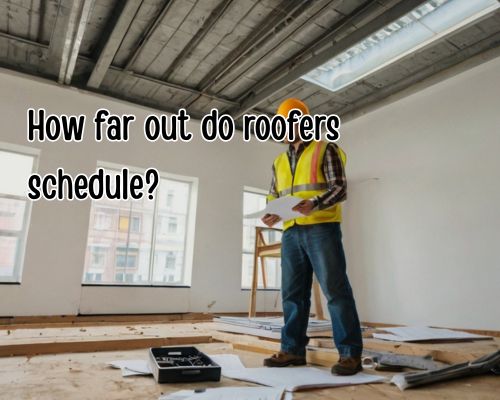How Often Should Rain Gutters Be Replaced? A Melbourne Homeowner’s Guide

How Often Should Rain Gutters Be Replaced? A Melbourne Homeowner’s Guide
When it comes to home maintenance in Melbourne, Australia, few features are more overlooked yet vital than rain gutters. Nestled along the eaves of your roof, gutters quietly channel stormwater away from your property, protecting your foundations, walls, and landscaping from costly water damage. But here’s the question many local homeowners find themselves asking: How often should rain gutters be replaced?

The answer isn’t just about ticking a maintenance checkbox. With Melbourne’s unpredictable climate—blending scorching summers with torrential downpours—understanding the lifespan of your guttering system is essential. This guide breaks down everything you need to know: the signs of wear, replacement timelines, material comparisons, and localized factors specific to Melbourne’s homes.
Understanding Gutter Lifespan: What Impacts It?
In general, rain gutters should be replaced every 20 to 30 years, depending on their material and exposure. However, this is not a one-size-fits-all rule. Several factors affect the longevity of your gutter system:
1. Material Type
Different gutter materials have distinct lifespans:
- Aluminium gutters – Common in Melbourne for their corrosion resistance. Lifespan: 20–25 years.
- Colorbond steel gutters – Popular across Victoria, especially in newer suburbs like Craigieburn and Clyde North. Lifespan: 25–30 years.
- PVC or vinyl gutters – More affordable, but prone to cracking under Melbourne’s UV exposure. Lifespan: 10–15 years.
- Copper gutters – Rare but beautiful. Can last 50+ years but are costly and less common in the average Melbourne home.
2. Weather Conditions
Melbourne’s weather—four seasons in a day—is notorious. The frequent rainfall, especially during winter and spring, puts extra strain on gutters. Prolonged wet seasons can accelerate corrosion and clogging, particularly in leaf-prone areas like the Dandenong Ranges or eastern suburbs such as Doncaster and Blackburn, where gum trees are abundant.
3. Installation Quality
Improper slope, poor joinery, or loose brackets can reduce the efficiency of your gutters. It’s common in older homes around Fitzroy, Brunswick, and St Kilda, where outdated gutter systems weren’t built with modern water flow in mind. You may also see gutter services for your needs.
4. Maintenance Frequency
How often you clean your gutters matters. Regularly clearing out leaves, moss, and debris—especially in autumn—can extend the lifespan significantly. Neglecting maintenance? Expect earlier failure and potential water ingress.
Warning Signs Your Gutters Need Replacement
Rather than relying solely on age, look for visual and functional signs of deterioration. These include:
- Cracks or splits in the gutter channels
- Peeling paint or rust streaks on the fascia or siding
- Sagging sections or separation from the roofline
- Mould or mildew near the foundation—indicating poor drainage
- Water pooling around the home’s base after heavy rain
- Frequent blockages despite regular cleaning
Melbourne’s leafy suburbs, particularly Kew, Ivanhoe, and Glen Waverley, often see gutter systems deteriorate faster due to increased leaf litter and nesting birds. In such areas, installing gutter guards can delay replacement and reduce maintenance. See gutter services.
Gutter Replacement Timeline for Melbourne Homes
So, based on local climate, material, and typical wear, here’s a rough replacement timeline:
| Gutter Type | Expected Lifespan | Melbourne Climate Adjustment | Practical Replacement Time |
|---|---|---|---|
| Aluminium | 20–25 years | –2 years (due to rain) | 18–23 years |
| Colorbond Steel | 25–30 years | Minor adjustment | 25 years |
| PVC / Vinyl | 10–15 years | –3 years (UV exposure) | 7–12 years |
| Copper | 40–50+ years | Minimal impact | 45–50 years |
The Cost of Replacement in Melbourne
Replacing gutters isn’t cheap, but delaying replacement can lead to structural damage, internal water leaks, and even pest infestations. On average, homeowners in Melbourne can expect to pay:
- $30–$55 per linear metre for Colorbond gutters
- $25–$40 for aluminium
- $20–$35 for PVC
Homes with double storeys, steep roofs, or those in heritage overlay zones (like Carlton or South Melbourne) may see higher costs due to access challenges or architectural considerations.
DIY or Hire a Gutter Specialist?
Sure, a handy homeowner might be tempted to tackle the job themselves, but Melbourne councils generally recommend using licensed roofing professionals for gutter replacements. Aside from the height risk, installation errors can void home insurance policies—especially if water damage results from improper drainage.
Hiring a local guttering expert ensures compliance with Victorian Building Authority standards and accounts for regional specifics like:
- Council regulations in areas such as Port Phillip, Maribyrnong, and Banyule
- Building code requirements for stormwater drainage
- Compatibility with Colorbond roofs, common in outer suburbs like Werribee and Epping
Extending the Life of Your Gutters
If your gutters aren’t ready for replacement just yet, there are ways to stretch their lifespan:
- Install Gutter Guards – Prevent clogging from leaves, especially in treed areas like Eltham or Mount Eliza.
- Schedule Biannual Cleanings – Ideally in late autumn and late spring.
- Check Downpipes and Drainage – Ensure flow is clear and directed away from the foundations.
- Touch Up Rust Spots Early – Minor repairs can delay full replacement by several years.
Final Thoughts: Don’t Wait for a Downpour
In Melbourne, rain can arrive unannounced. Don’t wait for that sudden spring deluge to find out your gutters are on their last legs. Replacing them proactively is far more cost-effective than dealing with foundation repairs, internal ceiling damage, or rising damp—common after prolonged water exposure.
Whether you’re living in a heritage terrace in Richmond or a new build in Point Cook, knowing how often to replace your gutters isn’t just maintenance trivia—it’s protection for your most valuable asset.
Call to Action
If your gutters are sagging, rusted, or over 20 years old, now’s the time to act. Contact a trusted local roofing and guttering professional in Melbourne to schedule an inspection. Your future self—and your dry foundation—will thank you.


